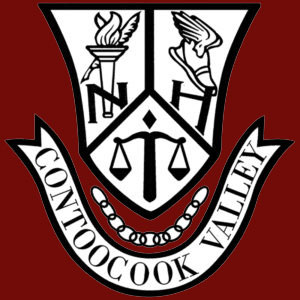by ConVal School Board Member Janine Lesser
The Covid19 Pandemic has thrust the world into a place it hasn’t seen in the lifetimes of our current generations. To see the changes that we are all struggling with is to see a world-down to the family level – that is challenging all of us to re-evaluate where we have been and where we are going.
School districts across the United States are reimagining education to be delivered where there is no physical school, no physical classroom, no physical classroom community. Over the past years, schools have adopted strategies to maximize their ability to deliver the wider world to their students by utilizing the internet and online resources as part of their curriculum. In higher grades, whole courses have been delivered online, offering wider and more flexible selections to students. There was never an expectation that remote learning would replace what communities, families, teachers, and students so highly prize about our physical schools: the classroom community.
The possibility of whole communities being shut down was on the horizon with the news of a new coronavirus ravaging Wuhan, China. On return from February Winter Break, teachers and administrators began work to shift their classroom curriculum to a format that can be delivered remotely. The need to re-translate curriculum began on March 14th, and continues to evolve as the virus has changed how we operate as a community. The first step was for all school staff to prepare materials for a learning menu in reading, writing, math, and unified arts, for use at home in the event of an extended shut down. Classroom lessons had to be translated to a format that could be delivered in a new medium. At this point, everyone was still unsure of what the virus would bring, and were hoping for a two-week hiatus before returning to the school buildings on April 6th. For this three-week period, login information was sent home for any learning platforms currently in use by classrooms. Teachers and administrators engaged in a comprehensive “reformatting” of the traditional classroom. Starting on March 18th (far ahead of many districts) teachers were reformatting and delivering instruction at the same time – flying the plane while building it simultaneously. Schools use technology to enhance curriculum, but research has always confirmed that the most effective and crucial part of education is the relationship between teacher and student. Principals and teachers explored how this connection would be communicated in this all remote world, most importantly for the most vulnerable students – the youngest and special education students.
Many problems had to be solved. Younger children require lots of adult supervision, and require free and outdoors time and exploration that caregivers or parents need to provide. If the parents are trying to work remotely, this creates serious problems. For 2nd-4th graders, they may need help in finding sites, logging on, reading instructions, clicking in the right place, typing answers, staying on task, again, a high degree of parent involvement. ConVal administration worked on two huge tasks: ensuring all students had a computer, and all students had internet access. This became especially crucial as April 6th approached and it was clear that the virus was only getting started, and the shutdown was going to continue. Students in grades 5-12 have a personal Chromebook for use in school, due to foresight of our nine communities in voting for budgets that continuously look forward. Students in grades PreK-4 have access to home computers only if there is a home computer. Internet access is a well-publicized problem for our nine-town school district, and has been the target of planning and legislative efforts over the past five years for a host of reasons – but now the ability to deliver an equitable education depended on the ability to ensure all children who needed one had access to a computer and the internet. The administration, with the cooperation of internet companies, delivered100 + hotspots along with additional Chromebooks and other appropriate technology.
At the same time, the question of how to support children and families who had depended on meals that were delivered in school had to be confronted, a need that became very clear as more and more families lost their jobs and their income. The administration immediately stepped up to develop a program where breakfast and lunch would continue to be put together by our food service contract, and delivered by our school busses.
As the shutdown continues, ConVal continues to learn and adapt. Where the classroom was the predominant platform used to deliver lessons, the new platform had to be constructed from the available remote tools, and lessons rearranged to be effectively delivered on this new platform. The process of moving instruction online is a time consuming and bumpy process: verbal classroom instructions and reinforcement must be clearly written in themes and directions, to be delivered by a third party – the computer. Where any confusion over assignments or lessons could be cleared up immediately, or with a short pull-out, separate time must now be scheduled. Teachers must always provide additional access for instructions, feedback, and follow up. Special education students do not at this point have access to Occupational Therapy, Physical Therapy, nurses, or their one-on-one aides. Administration is developing compensatory services for those students whose IEP’s require them, ensuring these students will retrieve the progress that they have made, and allowing them to continue progressing.
There are many styles of delivering remote education; teachers must figure out which matches their curriculum and their students. Some classes depend on morning check-in, some are using Google classroom, Zoom for online live classes, and most post office hours when they are available for student questions and help. Online resources must be curated for appropriate content, level, and support to the lesson.
At the same time, there are efforts towards the developing structure and a community environment of their school and classroom. Teachers are constantly assessing and measuring the amount their students are mastering, the level of their engagement. The social-emotional aspect of children feeling secure in their environment is one of the most important underlying facilitators of learning. Online lectures don’t work – teachers must devise other ways for lessons to be delivered. One of the most powerful learning strategies included in every classroom is the ability of students to support and mentor each other. The biggest challenge is creating this online community that will engage and allow collaboration across the class. Other challenges include measuring engagement, managing behavior, and dealing with overloaded platforms. Presentations must be crafted for on-demand relearning or rescheduling.
Classroom environment and curriculum cannot always be transferred online–especially for PreK-through grade 2, and for students with special needs. For those parts of the district that have weak or no bandwidth to support online technology, it’s not possible. Students who live in dead zones have no access to the school at all. For those students, the lessons must be translated a third way – hard copy packets. These packets of a day’s lesson must be copied, collated and sent to students on a weekly basis.
ConVal is well-positioned to meet these challenges as they have an administration and teachers who have previously completed work in integrating technology in their curriculum delivery. That is not to minimize the challenge of-overnight-switching from using technology as part of a classroom model to using technology as a classroom. That is a heavy lift, and the work continues as there is no clear end in sight.

